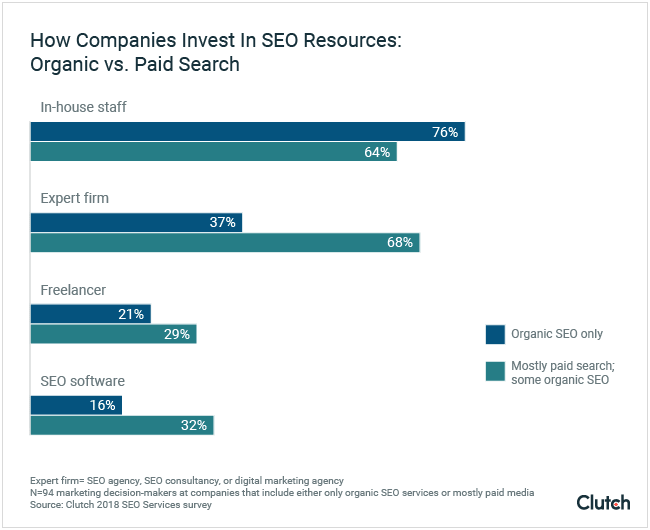The Gist
- SEO best practices still matter. To show up in search engine results pages (SERPs), following search engine optimization (SEO) best practices is necessary.
- Still Google’s world. Google dominates the global search engine market with 84% market share, making it crucial to consider in an SEO strategy.
- High-quality content. On-page SEO involves optimizing visible elements such as content, which should be relevant and high-quality, with expertise, authoritativeness and trustworthiness (E-A-T) guidelines in mind.
When someone wants to search for a product, look at videos or read about a topic, they go directly to their preferred search engine. And if you want to show up in said search engine results pages (SERPs), you’ll need to follow search engine optimization (SEO) best practices.
As we delve into best practices as of February 2023, our primary focus will be on Google. Why? Because it has dominated the global search engine market since its inception in 1997.
As of December 2022, Google held 84% of the search engine market — with runner-up Bing claiming nearly 9%.

Google doesn’t share its search volume data. But experts around the web estimate the search engine sees anywhere from 40,000 to 99,000 search queries every second. For one day, that could amount to more than 8.5 billion searches.
SEO, which companies use to maximize content marketing efforts, ultimately breaks down into three categories:
- On-page SEO
- Off-page SEO
- Technical SEO
Let’s take a look at some core components of these three categories and how SEO professionals can aim to follow best practices.
On-Page SEO
On-page SEO, also called on-site SEO, refers to the optimization of elements that you can see on-page, such as:
Content
Content is at the core of on-page SEO, and it’s what many people focus on when first optimizing their SEO strategy.
Relevance and quality are more important than any other Google ranking factor.
Google actively penalizes thin content that offers little to no value to searchers. While in the past it used to consider pages as a whole, it now looks at and ranks subsections within pages to match queries.
When you’re working on your content creation strategy or overall SEO strategy, consider these questions to determine if you’re headed in the right direction:
- Do you have a target audience in mind that will find your content useful if they come directly to you?
- Does your content demonstrate expertise that comes from firsthand experience?
- After reading your content, will someone feel they’ve learned enough about the topic?
If you’ve answered yes to these three questions, you’re on the right track.
Some content worst practices to stay away from include:
- Creating content specifically to attract people from search engines
- Utilizing extensive automation to produce lots of content on a variety of topics
- Summarizing what other content creators have said without adding additional value
- Writing to meet a particular word count or because you’ve heard Google’s algorithm prefers a specific word count (it doesn’t)
- Creating content that promises to answer a question that has no answer (for example, suggesting you know the release date of a movie that has no confirmed release date)
E-A-T Guidelines
E-A-T stands for Expertise, Authoritativeness and Trustworthiness. This concept became a core part of Google’s algorithm in August of 2019 and continues to play a significant role today in evaluating content.
In Google’s Search Quality Evaluator Guidelines, E-A-T specifically refers to:
- The expertise of the creator of the main content
- The authoritativeness of the creator of the main content, the main content itself and the website
- The trustworthiness of the creator of the main content, the main content itself and the website
E-A-T plays a part in websites of all types, including gossip columns, satire websites, forums and Q&A pages. How a website meets E-A-T guidelines will depend on the type of website. Some topics or industries will require less formal expertise than others.
For example, a news website with high E-A-T articles will convey journalistic integrity, contain factually accurate information and utilize robust policies and review processes with included sources.
A site containing scientific topics, on the other hand, should be created by people or organizations with the appropriate scientific knowledge or expertise and represent established scientific consensus.
When it comes to establishing E-A-T for your content, think about the page’s topic and what expertise is needed to achieve the purpose of that page.
Search Queries
Search queries are the words and phrases people use when using search engines or smart assistants. These words and phrases shift based on the search intent — the “why” behind the action.
Types of search intent include:
- Informational: The searcher is looking for information, wants to answer a question or learn how to do something. The best way to target an information query is to develop high-quality, SEO-focused content that provides helpful and relevant information to the user. Position yourself as a source of information people can trust.
- Navigational: The searcher is looking for a particular website or page. For example, they might type “YouTube” or “LinkedIn.” You can’t typically target navigational queries unless you own the specific website or page the person is looking for. But you can make sure you claim the top results spot for your brand’s own navigational query.
- Transactional: With this search intent, the user wants to make a purchase. The query might include a brand, product or service name or a generic item, such as “coffee maker.” You can target these search queries with optimized product or service pages. You can also use pay-per-click (PPC) campaigns to target these search terms.
By understanding search intent — which might include keyword research to best understand which words the target audience uses — companies can better craft content to meet needs and win more readers.
Links
You should include two types of links within your website or web page content: internal and external.
Internal links redirect to another page or piece of content on your website. For example, on an article about the latest chatbot trends, you might link to a related article about how chatbot technology works.
External links direct readers to a page that is not yours. These links should be highly relevant webpages or sites with high expertise, authoritativeness and trustworthiness (E-A-T).
Link building is also important — getting other websites to link back to your website or piece of content. These links signal to Google that your website is valuable enough to earn a citation, allowing content to rise in search rankings. We’ll talk more on these later, in off-page SEO strategies.
Visuals
Visuals (videos, gifs, pictures, infographics, etc.) are a large part of online content.
If you plan to use visuals on your site or pages, you’ll want to ensure that they’re:
- Large and high quality (beware of large image file sizes, however, which can cause slow loading)
- Relevant to the content
- Shareable
- Placed high on the page
- Have a relevant file name
- Have alt text, which aids visually impaired users
If you’re using video content, include a video transcript. Not only will a transcript make your content more accessible, but it will also make videos more “scrapable” by search engine bots.
Meta Title & Meta Description
Your meta title (the alternative title that shows up on Google) tells search engines and searchers what your content is about and what keywords to focus on. This title should be relevant to your content, include at least one word or phrase from your keyword research and be no longer than 60 characters.
Search engines don’t factor meta descriptions into your ranking — but that doesn’t mean you should ignore it.
The meta description is the ideal place to let Google and searchers know what your page is about. As a result, you’ll see higher click-through rates.
URL & Slug
Including your keyword within the slug of the URL — the last part of the URL that identifies the unique page — is a small bonus to SEO. However, if you can’t do so in a sensible way, it won’t be a big hit against you.
Ensure that your slug matches the title of your content. For example, if your blog post is about customer experience, your URL might be: www.yourwebsite.com/blog/all-about-customer-experience
Another thing to keep in mind is that shorter URLs receive high click-through rates than longer ones. A shorter URL comes across as more trustworthy and authoritative to users.
Other best practices for URLs include:
- Avoid using dates in your slugs (for example: “2022-customer-experience-best-practices”
- Use the hyphen between words in your slugs
Off-Page SEO
Off-page SEO refers to optimization strategies that don’t involve the content on your website. Some of the most vital off-page SEO tactics include:
Link Building
As mentioned above, earning backlinks from other authoritative sites can position your website or web page as trustworthy and increase your rankings on Google.
You don’t want to get backlinks from any site. In fact, getting backlinks from link farms — a group of websites that all link to one another to increase organic search rankings — can result in a penalty from Google. Google also penalizes any site that gets caught paying for links.
Some link-building tips to turn to instead include:
- Create high-value content that others want to share
- Promote your content via social media, which leads others to sharing it
- Submit your website to business directories
- Promote your content via paid campaigns, which may lead others to link to it
- Look for relevant content on other sites that contains broken links, and send an email with the suggestion to use your content as a replacement
- Ask people in real life to share your website or content on social media
Brand Building
Google rewards well-known brands. And branded searches (your company’s name, domain name searches and product searches) will lead right back to your website.
Google offers a great tool, Google Trends, that allows people to track interest in a topic, such as a brand, over time. SEO professionals can also use this tool to track searches for specific products or services.
Social Media
Social media plays a big role in how people learn about brands, websites and content. As of 2022, there were 4.59 billion social media users worldwide — a number expected to grow to 5.85 billion by 2027.

You should have a presence on the social media channels that matter most to your target audience.
Some of the most popular social media platforms, as of 2022, include:
- Facebook: More than 2.9 billion monthly active users (MAU)
- YouTube: More than 2.5 billion MAU
- Instagram: More than 1.4 billion MAU
Not only should your profile include pertinent information about your brand (what it does, where it’s located, contact methods, the website, hours for in-store operation, etc.), but you should also post original and engaging content regularly.
For instance, if you offer a specific product, you could create educational content on how to use that product or answers to frequently asked questions. You can also encourage user-generated content from your community.
Encourage users that read and engage with your social media content to visit your website or web content to learn more.
Technical SEO
Technical SEO is exactly what it sounds like — it refers to the technical aspects that play into your website and web pages, like page load speed and responsiveness.
Google Search Console is an ideal tool for monitoring and maintaining SEO health. It can measure traffic, generate reports, including a technical SEO report, and fix issues.
Technical SEO includes:
Site Speed
Loading performance is part of Google’s Core Web Vitals, which measures different aspects of the user experience. A website or page should only take 2.5 seconds or less to load the page’s main content.
To ensure fast website load speeds, you should:
- Choose a fast hosting option
- Choose a fast domain name system (DNS) provider
- Keep the use of scripts and plugins to a minimum
- Use small image files (without creating pixelization)
- Minify your site’s code
- Compress your webpages
Mobile-Friendliness
As of the second half of 2022, mobile traffic accounted for more than half of global web traffic. Not only does a mobile-friendly design make for a better user experience, but it’s a significant ranking factor for Google.
If you’re unsure of your website’s mobile accessibility, you can use Google’s Mobile-Friendly Test.
Most brands accomplish mobile-friendliness by using a responsive web design, which adjusts itself automatically depending on the type of device a person is using.
Google also offers a guide on customizing website software for companies that use content management platforms (CMS) like WordPress, Joomla or Squarespace.
Beyond using a responsive design, companies should also pay attention to how content and assets behave on-page for mobile users. Layouts that shift when a person is trying to read content or interact with the page are a significant part of Google’s Core Web Vitals.
SEO professionals can monitor these movements with a metric called cumulative layout shift (CLS), which measures visual stability and quantifies how often these shifts occur. Core Web Vitals recommends that pages maintain a CLS of 0.1 or less.
XML Sitemaps
An XML sitemap helps search engines understand your web pages while crawling them. It tells them:
- Exactly where each page is
- When a page was last modified
- Which pages hold the most priority
- How frequently a page is updated
Some hosting platforms create an XML sitemap automatically. If your chosen platform does not, you’ll want to look into using an XML sitemap generator.
Site Indexing
Google Search Console allows you to submit your website’s XML sitemap for site indexing. (Bing also has a version of this tool called Bing Webmaster Tools.)
These tools also track the general SEO performance of your site, allowing you to:
- Test your site’s mobile-friendliness
- Access search analytics
- View backlinks to your site
Search in 2023: SEO Strategy Remains Top Priority
People want content that is high-quality and relevant to them. If you want to appear in their search results, it’s essential to pay attention to changing SEO trends and tactics.
Google continually updates its algorithm, meaning how they rank your site or content will depend on your use of the latest SEO strategies. With the latest tips above, you can ensure your content meets essential Google ranking factors and shows up in search results for your target audience.
By Michelle Hawley
Michelle Hawley is an experienced journalist who specializes in reporting on the impact of technology on society. As a senior editor at Simpler Media Group and a reporter for CMSWire and Reworked, she provides in-depth coverage of a range of important topics including employee experience, leadership, customer experience, marketing and more. With an MFA in creative writing and background in inbound marketing, she offers unique insights on the topics of leadership, customer experience, marketing and employee experience. Michelle previously contributed to publications like The Press Enterprise and The Ladders. She currently resides in Pennsylvania with her two dogs.

























